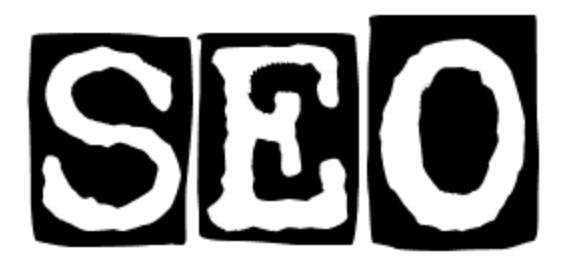SEO: Content is Still King & Keywords are Still Gold
In the swiftly changing digital world, gaining proficiency in search engine optimization (SEO) goes beyond merely keeping pace; it’s about blazing the trail. As we gear up for the rest of the year 2024, it’s crucial to delve into the revolutionary SEO strategies that industry veterans endorse, aiming to propel your online visibility to unprecedented levels.
In this era of rapid digital advancement, understanding and effectively utilizing SEO is of paramount importance. It’s not just about keeping up with the relentless pace of change, but about leading the pack, setting new benchmarks, and shaping the future of digital marketing. SEO is a potent tool that can dramatically amplify your online presence, making your brand more noticeable to your target demographic.
As we stand on the threshold of 2024, it’s time to immerse ourselves in the intricate world of SEO. It’s time to uncover the groundbreaking tactics that have been rigorously tested and approved by the industry’s leading professionals. These are the strategies they stand by, the ones that have consistently proven their effectiveness in enhancing online visibility.
These tactics go beyond merely improving your search engine rankings. They involve understanding your audience’s needs, creating valuable and engaging content, and building a robust online brand. They focus on enhancing your website’s accessibility, user-friendliness, and engagement levels. They leverage the power of social media, local SEO, and mobile optimization to reach a wider audience.
So, as we prepare for the rest of 2024, let’s not just keep up with the digital revolution; let’s spearhead it. Let’s adopt the SEO strategies that the industry’s best swear by and catapult our online presence to new heights.
Staying Ahead of the Curve with Customer Insights
The secret to SEO dominance? Knowing your audience inside and out. Predict their next move by staying attuned to their evolving needs and preferences. When you craft content that resonates with their future searches, you’ll not only catch their eye—you’ll hold their attention.
Wisdom from the SEO Gurus
Lean into the wisdom of seasoned SEO gurus. These trailblazers have the roadmap to success and are often generous in sharing their playbook. Absorb their insights like a sponge and refine your strategies accordingly.
The AI Revolution in Content
Embrace the revolution of Artificial Intelligence (AI) in content creation. This isn’t just about efficiency; it’s about insight. AI fuels your content strategy with data-driven ideas and fine-tunes your content to near perfection for stellar SEO results.
The Bedrock of SEO Success
The foundation of achieving success in Search Engine Optimization (SEO) lies in understanding and adhering to its core principles. While it’s true that change is the only constant in SEO, with algorithms and ranking factors continually evolving, it’s crucial not to lose sight of the bedrock principles that underpin this field.
These principles include creating high-quality, relevant content that meets the needs of your audience, optimizing your site’s structure and design for search engines, and building high-quality backlinks from reputable sources. These are the pillars of SEO that remain steadfast, regardless of the changes in the landscape.
Importance of a Technically Optimized Site
A technically optimized site is a critical component of these principles. This means ensuring that your site is easily crawlable and indexable by search engines, has a responsive design that works well on all devices, loads quickly, and provides a seamless user experience. Technical SEO also involves optimizing your site’s metadata, including title tags, meta descriptions, and alt text for images, to help search engines understand the content on your pages.
Enduring Success in SEO
Aligning your site with these SEO fundamentals forms the backbone of your strategy for enduring success. It’s not about chasing the latest trends or algorithm changes, but about building a solid foundation that can withstand these changes. By focusing on these bedrock principles, you can ensure that your site remains visible and competitive in the search results, driving consistent traffic and achieving your business goals.
Remember, SEO is a long-term strategy. It’s not about quick wins but about building a sustainable presence in the digital landscape. By sticking to the bedrock principles and maintaining a technically optimized site, you can achieve enduring success in SEO.
The Gold Standard: Content Excellence
Settle for nothing less than excellence in your content. It’s the gold standard in SEO. Engaging, relevant, and valuable content isn’t just preferred—it’s expected. It’s what sets you apart and drives you to the top of the rankings.
Solutions at Their Fingertips
Be the answer to your audience’s problems. When your content is the key that solving their issues, your site becomes the go-to resource. This not only boosts your SEO but also builds loyalty and trust.
The Blueprint: Official SEO Guidelines
For an SEO strategy that hits the mark every time, turn to the source—official search engine guidelines. It’s the blueprint that gives you the low-down on how the big players rank your content.
Structured Data: The SEO Supercharger
Structured data operates as the SEO supercharger, propelling your content’s online prominence to new heights. It is a strategic implementation of a specialized language—schema markup—that serves as a direct communication line to search engines. This coding language speaks to search engines in a way that they understand unequivocally, leaving no room for misinterpretation of your site’s content. When you embed structured data into your website’s HTML, you essentially provide a detailed roadmap of your site’s content for search engines like Google, Bing, and Yahoo.
This roadmap comes in the form of rich snippets, which are the enhanced descriptions that appear beneath the page title in search results. Rich snippets can display stars for reviews, images for recipes, or event dates and locations, making them an attractive draw for potential visitors. This clear-cut data helps search engines crawl, parse, and display your content in a manner that is not only more efficient but also more aligned with the intent of the searcher’s query. The result is often a more prominent display in search results, such as in featured snippets, Knowledge Graph entries, or in the coveted “position zero” in search rankings.
The implementation of structured data enhances content discoverability and relevance, which can lead to improved click-through rates and higher search rankings. Moreover, it can be particularly beneficial for voice search and mobile search, where concise and accurate data is paramount. In the rapidly evolving digital landscape, where search queries are becoming increasingly complex, structured data is the secret weapon that ensures your content stands out, remains competitive, and reaches the target audience with precision.
The Video Vanguard
Don’t miss the video content wave—it’s a titan in the making. Optimize your video content for search to tap into the audience that’s hungry for visuals over text.
The Voice Search Frontier
With voice search on the rise, it’s time to get conversational with your keywords. Stay ahead by aligning your content with the natural language of voice queries.
Local SEO: The Community Champion
For brick-and-mortar businesses, local SEO is your lifeline. Ensure your Google Maps and local directory listings are pinpoint and accurate to drive real-world traffic right to your doorstep.
Capture the Spotlight in Search Engine Results with Enhanced Rich Snippets
In the vast and ever-expanding digital ocean of search engine results, gaining visibility is paramount for any website looking to attract traffic. Rich snippets are the key to unlocking this visibility, acting as a powerful beacon that not only commands attention but also significantly elevates your content above the standard search listings.
Rich snippets are essentially a type of structured data markup that you can add to your website’s HTML. This markup informs search engines what type of content is on your page and how to interpret it. As a result, search engines can display more informative results, often referred to as “rich results.” These rich results can include elements such as star ratings, images, author details, price information, and more, depending on the content type and industry.
By leveraging the full potential of rich snippets, your website can showcase a snapshot of the most compelling information directly on the search results page. This not only provides immediate value to the user by highlighting key information but also sets your listing apart from the competition. The additional details catch the user’s eye and provide a glimpse into what your page contains, making your result more enticing and relevant, which naturally leads to a higher click-through rate.
For e-commerce sites, rich snippets can display product pricing, availability, and reviewer ratings, giving potential customers enough information to pique their interest and encourage them to click through to your site. For recipe blogs, rich snippets can show an image of the dish, preparation time, calorie count, and user ratings. These enticing visual cues invite users to explore your culinary creations further. Similarly, for event listings, rich snippets can present dates, locations, and even the option to purchase tickets, all from the search results page.
Implementing rich snippets requires a solid understanding of structured data formats such as Microdata, RDFa, or, most commonly, JSON-LD, which Google recommends. These formats help search engines to crawl, interpret, and display the content more effectively. While there is no guarantee that search engines will always use your markup to create rich snippets, providing this structured data is the best practice to increase your chances.
In conclusion, by enhancing your web pages with rich snippets, you can dramatically improve your online visibility, entice users with a preview of your content, and significantly improve the odds of a click-through. In the competitive arena of search engine rankings, rich snippets are not just an option; they are an essential tool for any website aiming to capture the attention of potential visitors effectively.
Linking: The Inner Web of SEO
Forge a strong internal linking network to guide visitors through your digital domain. It’s a strategy that not only captivates your audience but also gives search engines a roadmap of your content’s hierarchy.
Mobile-First: The New Standard
The future is mobile, and mobile-first indexing is your ticket there. A seamless experience across all devices is no longer a perk—it’s a must for ranking favourably.
In the dawn of 2024, the voyage to the zenith of SEO is a harmonious blend of ingenuity and unwavering adherence to the core principles. Let your guiding light be exceptional content, brandish the formidable power of AI as your shield, and ensure your site operates seamlessly across all platforms. This is the path to amplify your digital footprint and successfully navigate the turbulent seas of the digital realm. We’re not here to simply partake in the game; we’re here to revolutionize its very foundations.






